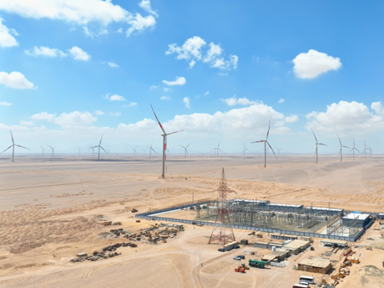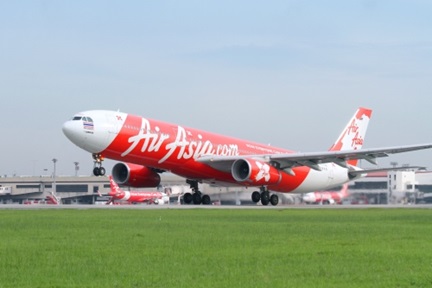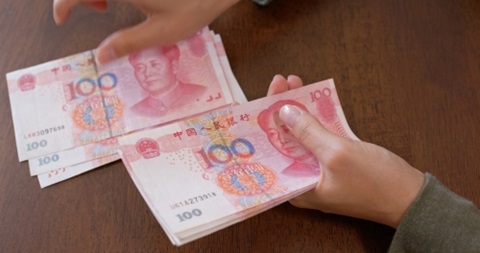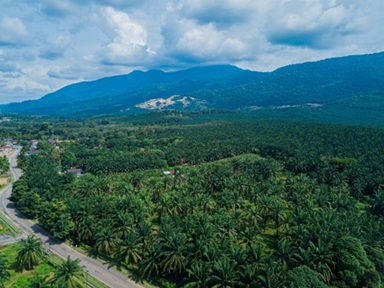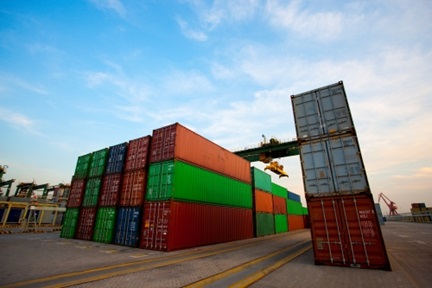African leather starts to shine
Africa exports raw hides and imports leather products. But now its leather industry is slowly turning a corner.
By Johan Burger

FASHION BOOSTING AFRICA’S LEATHER SECTOR
Africa’s leather industry faces many challenges. Today, the best quality African leather is exported, processed abroad and then re-imported as finished goods. Parts of Africa lack basic infrastructure, such as good machinery for drying. In some markets in Africa, e.g., in the Mushin market in Lagos, the leather sold is imported from Europe. African tanneries tailor their policies according to the needs of their largest buyers, often Western businesses. This bias leads to high minimum order quantities, shutting out African designers that place smaller orders.
Consumers do not appreciate African leather as EU laws allowed luxury fashion houses that source raw leather from Africa to avoid using a Made in Africa tag. Made in Africa leather goods were thus under the radar, struggling to build an image for quality and excellence, even though much of the leather used globally originates in Africa.
This branding challenge could soon fade. A tweet in March 2020 claimed that a Nigerian tannery supplied leather to luxury fashion houses such as Louis Vuitton and Ralph Lauren. This revelation led to a flood of orders as the fashion industry sought new sourcing opportunities that supported Black-owned businesses. In June, Nigerian leather brand Winston Leather received its most significant orders in its 30 years in business.
Some African leather goods companies have adapted and use local material resources to the full in response to such phenomena. Ethiopia-based Tibeb Leather Works uses leather to create leather purses and other accessories from material that many premium houses would discard as flawed.
According to Mark Stephenson, Managing Director (MD) of Sandstorm Kenya, the question is how Africa can use technology to create more jobs for artisans and tanners and optimise value within Africa using slow fashion.
African designers are now using local resources and their design capacity for sustainable fashion to alter buyer perceptions of African leather and to promote it to a broader market. Tanners receive education on less toxic methods of tanning and dyeing leather and motivation to push for more environmentally friendly policies in leather production.
African designers need and can develop a new quality image for Made in Africa. Tibeb Leather is partnering with Ethiopian businesses to create educational materials that help young designers understand Ethiopia’s design history and design with sustainable materials from Africa. Nigeria’s Femi Olayebi of Femi Handbags uses initiatives, such as Lagos Leather Fair, to connect tanners to designers and groups of buyers organised to enable small designers to buy in bulk from tanneries with high minimum order quantities.
According to Stephenson, tanners and manufacturers must convince Western designers and luxury houses to use their leather and make themselves accessible to African designers and brands who can tell and celebrate an authentic story of African artisanship.[1]
KENYA STEPS UP LEATHER EXPORTS
Kenya’s share of the US$13.9bn global leather market is at most a mere 0.89% (US$124m). However, its producers have excellent growth potential. They can start by optimizing their exports of raw and semi-processed hides and skins that constitute over 95% of the sector’s export value (approx.US$87m). By processing these skins and hides before exportation, the industry in Kenya could create at least 50,000 jobs and generate US$150-250m in added GDP.
The industry in Kenya faces several serious challenges. These include counterfeits, inadequate value addition and a persistent skills deficit.
Poor quality counterfeit products in Kenya lead directly to losses of potential tax revenue and jobs. The industry is developing a policy paper on the harmonisation of nomenclature, branding and traceability to help deal with counterfeits. Kenya raised import duties on finished leather products to protect local manufacturers against countries that offer significant subsidies to their leather businesses.
Various institutions in Kenya now collaborate to develop new products intended to enable local companies to compete for huge contracts with global retail chains. Also, creating joint production units helped SMEs to enhance the quality of their leather products.
Currently, local value addition for hides and skins averages only 5%. This lost opportunity costs the country billions in direct earnings and thousands of jobs. In addition, most small producers use sun drying, suspension drying, and other crude techniques to preserve their skins, which leads to inferior quality.
Kenya’s leather sector suffers from a huge skills deficit. The growing focus on quality and strict import quality benchmarks requires the industry to adopt global best practice. Manufacturers need training and more specialised technical skills to deal with the competition from cheaper and better-quality imports. Most manufacturers use on-the-job training to upskill their workers. Networking with leather companies from the developed world has provided local leather product manufacturers with new knowledge on product finishing, branding and marketing.
Kenya’s export markets currently include China, Italy and India (its main markets), the EAC region and other parts of Africa, and the USA and parts of Europe.
The Kenya-UK economic partnership deal recently signed by the two countries presents an opportunity for the sector to grow its exports.[2]
To further boost Kenya’s leather industry, the sector built the Ngozi Leather Park in Machakos, ready for use by December 2021. The park will benefit from its EPZ status. The park intends to revolutionise Kenya’s leather value chain, creating a new market for skins and hides. The park will be a one-stop-shop for leather, leather goods and related industries, including tanneries.[3] The Park, developed at a cost of US$157.1m, is expected to benefit Kenya’s herders and hide traders. It has 14 tanneries and an effluent treatment plant as well as 12 modern stalls. The Park can process 150 tons of raw hides and manufacture 10,000 pairs of shoes daily and is expected to create more than 50,000 jobs.[4]
SUPPORTING ESWATINI’S LEATHER SECTOR
Eswatini (formerly Swaziland) and COMESA (the Common Market for Eastern and Southern Africa) recently agreed to organise a training program for leather artisans. The two parties signed a Grant Agreement to receive an overall amount of more than US$2.3m from the European Development Fund (EDF) through the Regional Integration Support Mechanism (RISM). This collaboration supports the training of more than 150 artisans in various areas of the Leather Value chain in Eswatini, such as in footwear design and fabrication, leather goods design and fabrication, vegetable-based tanning and the establishment of a vegetable tanning cluster. The project also funds the development and validation of a feasibility study on establishing a leather tannery in Eswatini.
Eswatini is highly dependent on imported footwear and other leather products. Its annual footwear imports averaged US$17.8 million in the period 2011 to 2017, which indicates a good local market.
Generally, factors such as lack of skills in business management, collaboration (clustering), and limited access to suitable equipment/machinery and technical production skills constrain the artisans in Eswatini that are involved in producing footwear and other leather products.
The project will enhance the performance of the leather value chain by mitigating some of the inhibiting factors noted above.[5]
AFRICAN LEATHER INDUSTRY COMES TOGETHER
The recent South-South Leather Industry Exchange (SSE) virtual forum examined policies in the region. The leather industry in some countries generates more value across the value chain. In some other countries, nationalistic policies resulted in the opposite effect.
Executive Director in the Africa Leather and Leather Products Institute (ALLPI), Prof. Mwinyikione Mwinyihija noted that leather industry policies should ensure real growth and development through measurable, scoped, and scoped targets and address the expectations of industry stakeholders. Those local companies that benefit from policies providing an unfair advantage over competitors frequently fail to develop an adequate capacity to create value. In some cases, nationalistic policies block regional integration and synergy among stakeholders. While nationalistic policies tend to be slow at building skills, regional policies that encourage competition can build skills.
Leather industry speakers at the forum emphasized the importance of having an industry-led policy development mechanism, including incentives for stakeholders to create synergy. Examples cited are leather parks and cities. Egypt provided incentives for tanneries to move out of Cairo to the Robbiki leather city with free land and compensation for damages during movement.
Government support was essential to ensure that new policies resolve logistical problems, provide access to finance, address the local market, solve input problems, and enable quality assurance through continued skills development.
The Ethiopian Leather Industry association collaborated with the Leather Industry Development Institute (LIDI) on four sector focus areas to provide technical support, conducting research and development.
Mukashaka Germaine, the chairperson of Rwanda’s Leather Value Chain Industry Platform, proposed developing time limits to avoid delays in implementing agreed policies in the East African Community.
Stakeholders in the forum called for more collaboration between countries to eliminate fake and illicit leather from the market, strengthen national associations in policy formulation and implementation, and transfer knowledge that will enable the region to contribute more to the global leather industry.[6]
POINTS OF INTEREST
- Africa’s leather industry is a prime example of a sector with huge potential not only to take the import substitution route but to build a strong brand for African leather. Several countries, such as Kenya, import leather products even though African has vast cattle herds. As stated above, they export raw hides and skins and then import value-added products such as shoes. From a development perspective, Africa trend toward premature deindustrialisation, despite adopting goals to increase the contribution of manufacturing to GDP. One of the initiatives planned to boost leather manufacturing in Kenya was a new industrial park for leather apparel in Machakos. If successful, it could boost Kenya’s exports of manufactured leather goods and help reduce imports.
- Several Africa countries show a decline in the contribution of manufacturing to GDP. In South Africa, the manufacturing sector’s contribution to GDP declined from 26% in 2007 to less than 13% by 2020. In Kenya, the sector’s contribution dropped from a high of 12.79% in 2007 to 7.54% in 2019. These led to measures aimed at boosting manufacturing in Kenya to 15% of GDP by 2022. This happy outcome is unlikely in the leather industry without support for the sector to increase value-added locally before exportation.
- Adding value to Africa’s raw hides and skins will have a wide range of benefits. They include saving foreign currency on imported shoes and other leather products that can be produced locally, generating revenues from exporting leather products abroad and creating more complex and meaningful job opportunities. These benefits can potentially boost the general economy and lead to a higher quality of life for Africa’s citizens.
- The sector is making slow progress in positioning Africa as the origin of high-quality leather. The AfCFTA as an entity must focus on adopting policies that will enhance the coordination and cooperation within Africa on issues such as building the Made in Africa brand. Such collaboration is not only applicable and relevant to the leather industry, but various other industries. While quality has become a non-negotiable factor, the perception of Africa as the origin of low- quality products will take hard work to change. A resolute political will and the implementation of globally acceptable standards is essential to bring this about.
Additional Readings
Adenji, A. 2021. Can Made in Africa transform the continent’s leather industry. Vogue Business. 29 January 2021. Available at https://www.voguebusiness.com/fashion/can-made-in-africa-transform-the-continents-leather-industry. Accessed 20 April 2021.
Ivudria, G. 2021. South-South Leather Industry Exchange (SSE) call for a coordinated policy. EABW News. 29 January 2021. Available at https://www.busiweek.com/south-south-leather-industry-exchange-sse-call-for-a-coordinated-policy/. Accessed 20 April 2021.
Kariuki, J. 2021. How Kenya can carve out bigger share of global leather market. Business Daily Africa. 29 January 2021. Available at https://www.businessdailyafrica.com/bd/corporate/industry/Kenya-can-carve-out-bigger-share-of-global-leather-market-3273766?utm_source=traqli&utm_medium=email&utm_campaign=bdafrica_newsletter&tqid=i6CnNnUuBF4BCOTDrr9Zn17YPT0M5HaAbQnjxgDhiQ. Accessed 20 April 2021.
Kivuva, E. 2021. Machakos leather park to open by end of year. Business Daily Africa. 1 February 2021. Available at https://www.businessdailyafrica.com/bd/news/counties/machakos-leather-park-by-end-of-year-3275064?utm_source=traqli&utm_medium=email&utm_campaign=bdafrica_newsletter&tqid=gKSgfn8lB0oBRaKoK_V1BB6qX.IiAIyUh3tPuwyk1A. Accessed 20 April 2021.
Osemo, W. 2020. COMESA enhancing the leather value chain in Eswatini. COMESA. 29 August 2020. Available at https://www.comesa.int/comesa-enhancing-the-leather-value-chain-in-eswatini/. Accessed 20 April 2021.
Ngotho, S. 2021. Sh17 billion leather park to boost herders hides traders. Business Daily. 28 May 2021. Available at https://www.businessdailyafrica.com/bd/news/counties/sh17-billion-leather-boost-herders-hides-traders-3416536?utm_source=traqli&utm_medium=email&utm_campaign=bdafrica_newsletter&tqid=huXmMCohBE4Bs92vtNqN2Mh6ooVwNny.ue1xLD8KGQ. Accessed 20 July 2021.
References
[1] https://www.voguebusiness.com/fashion/can-made-in-africa-transform-the-continents-leather-industry


